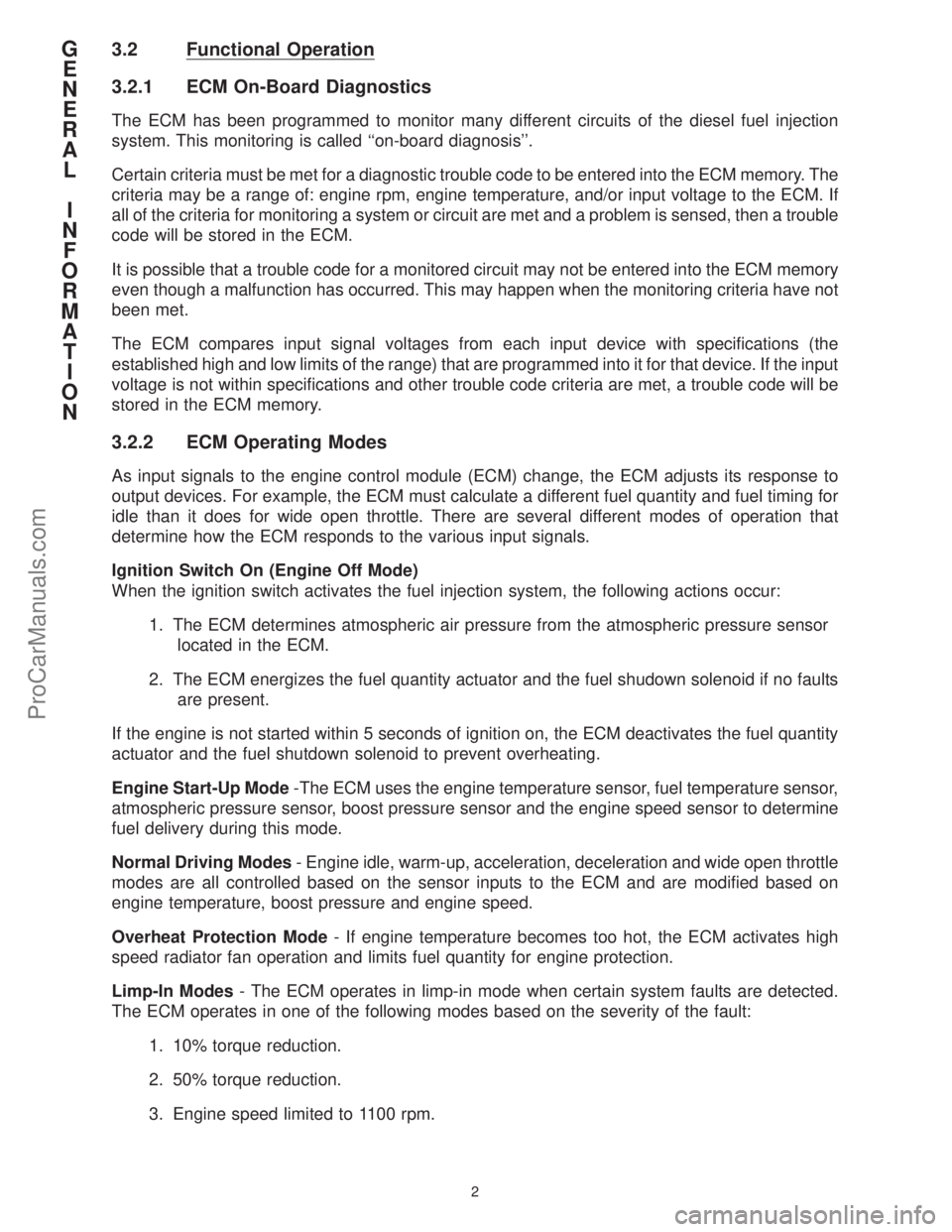ECO mode CHRYSLER CARAVAN 2000 Service Manual
[x] Cancel search | Manufacturer: CHRYSLER, Model Year: 2000, Model line: CARAVAN, Model: CHRYSLER CARAVAN 2000Pages: 436, PDF Size: 3.4 MB
Page 8 of 436

3.2 Functional Operation
3.2.1 ECM On-Board Diagnostics
The ECM has been programmed to monitor many different circuits of the diesel fuel injection
system. This monitoring is called ``on-board diagnosis''.
Certain criteria must be met for a diagnostic trouble code to be entered into the ECM memory. The
criteria may be a range of: engine rpm, engine temperature, and/or input voltage to the ECM. If
all of the criteria for monitoring a system or circuit are met and a problem is sensed, then a trouble
code will be stored in the ECM.
It is possible that a trouble code for a monitored circuit may not be entered into the ECM memory
even though a malfunction has occurred. This may happen when the monitoring criteria have not
been met.
The ECM compares input signal voltages from each input device with specifications (the
established high and low limits of the range) that are programmed into it for that device. If the input
voltage is not within specifications and other trouble code criteria are met, a trouble code will be
stored in the ECM memory.
3.2.2 ECM Operating Modes
As input signals to the engine control module (ECM) change, the ECM adjusts its response to
output devices. For example, the ECM must calculate a different fuel quantity and fuel timing for
idle than it does for wide open throttle. There are several different modes of operation that
determine how the ECM responds to the various input signals.
Ignition Switch On (Engine Off Mode)
When the ignition switch activates the fuel injection system, the following actions occur:
1. The ECM determines atmospheric air pressure from the atmospheric pressure sensor
located in the ECM.
2. The ECM energizes the fuel quantity actuator and the fuel shudown solenoid if no faults
are present.
If the engine is not started within 5 seconds of ignition on, the ECM deactivates the fuel quantity
actuator and the fuel shutdown solenoid to prevent overheating.
Engine Start-Up Mode-The ECM uses the engine temperature sensor, fuel temperature sensor,
atmospheric pressure sensor, boost pressure sensor and the engine speed sensor to determine
fuel delivery during this mode.
Normal Driving Modes- Engine idle, warm-up, acceleration, deceleration and wide open throttle
modes are all controlled based on the sensor inputs to the ECM and are modified based on
engine temperature, boost pressure and engine speed.
Overheat Protection Mode- If engine temperature becomes too hot, the ECM activates high
speed radiator fan operation and limits fuel quantity for engine protection.
Limp-In Modes- The ECM operates in limp-in mode when certain system faults are detected.
The ECM operates in one of the following modes based on the severity of the fault:
1. 10% torque reduction.
2. 50% torque reduction.
3. Engine speed limited to 1100 rpm.
G
E
N
E
R
A
L
I
N
F
O
R
M
A
T
I
O
N
2
ProCarManuals.com